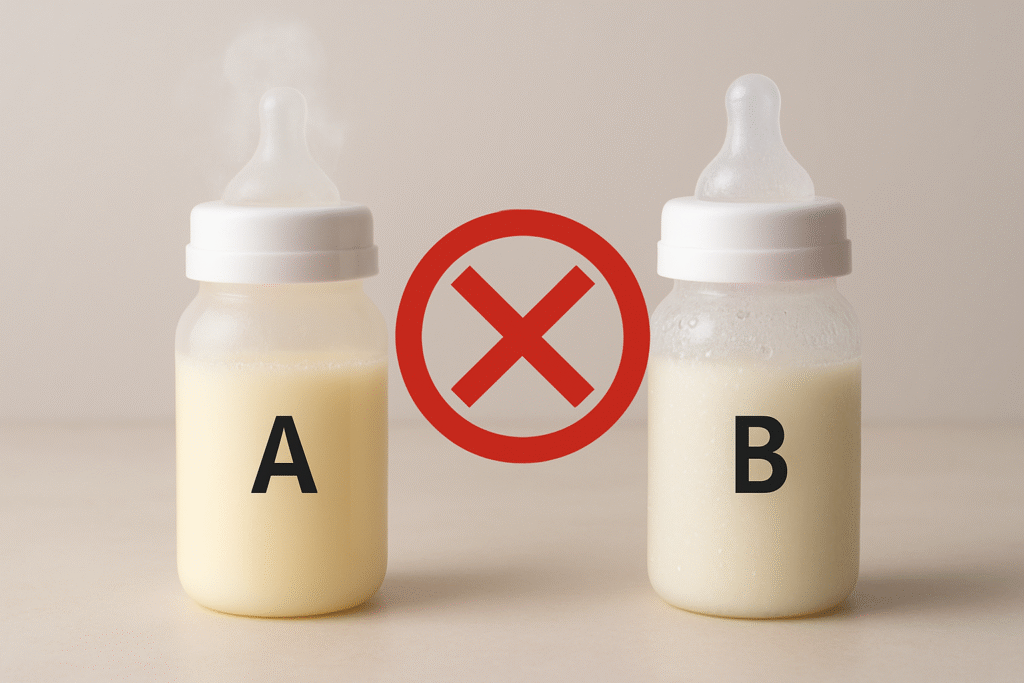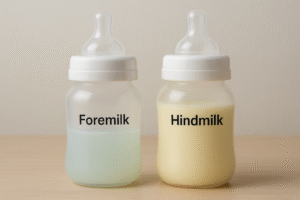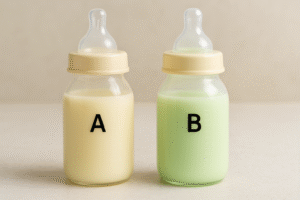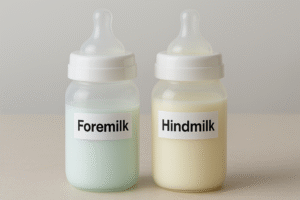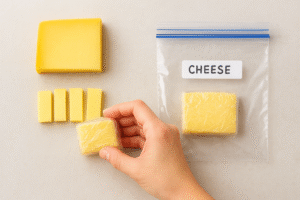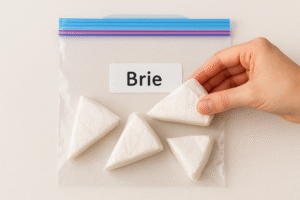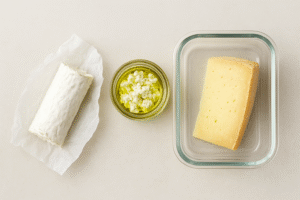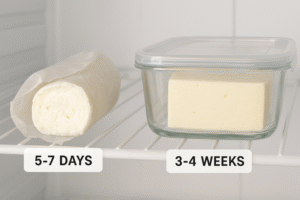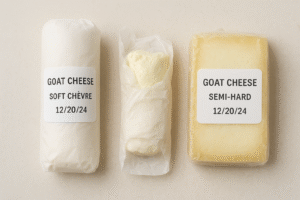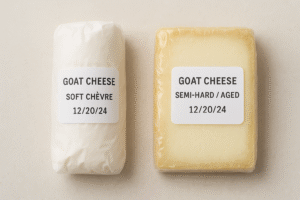Why Moms Ask This Question So Often
If you’re a pumping mom, you’ve probably faced this situation: you just pumped a few ounces of warm milk and already have some stored in the fridge.
Now you’re wondering — can you pour the warm milk into the cold one, or will that make it unsafe for your baby?
This guide answers that question clearly, backed by CDC and La Leche League International recommendations, plus real tips from experienced U.S. moms.
If you’re still setting up your storage system, you can also read our post on how to use breast milk storage bags step by step.
⚖️ The Short Answer: Not Directly — Cool It First
You should not mix freshly pumped warm milk directly with cold or refrigerated milk.
Why? Because the temperature difference can cause bacterial growth and break down nutrients faster.
To mix safely:
- First, chill the freshly pumped milk in the refrigerator for about 30 minutes or until both are the same temperature.
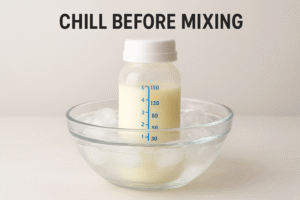
- Once both portions are cool, you can safely combine them in one container.
👉 This ensures consistent temperature and protects your baby from contamination risks.
🧊 Why Mixing Temperatures Can Be Risky
When warm milk meets cold milk, the internal temperature of the storage container rises, allowing bacteria to multiply faster — especially if it takes time before refrigerating again.
Here’s what can go wrong:
- Nutrient loss: Sudden temperature shifts can affect fat and enzyme balance.
- Bacterial growth: Warmth gives bacteria the perfect chance to grow.
- Reduced freshness: Milk may spoil sooner, even if kept in the fridge later.
According to the CDC’s Breast Milk Storage Guidelines, milk should always be stored at a consistent temperature of 39°F (4°C) or colder.
🧺 Step-by-Step: How to Mix Warm and Cold Breast Milk Safely
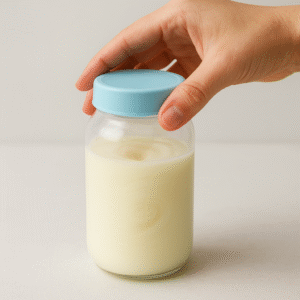
- Pump your fresh milk.
- Place it in a clean storage bottle or bag.
- Cool it first: Keep it in the fridge for about 30 minutes, or use an insulated cooler with ice packs if you’re traveling.
- Once both portions are cold, combine them gently — swirl, don’t shake.
- Label with the older milk’s date (since that batch expires sooner).
If you’re preparing your freezer stash, also check our detailed Breast Milk Storage Guide for U.S. Moms (2025 Edition).
🌡️ Mixing Freshly Pumped Milk With Frozen Milk — Is It Safe?
No — never pour warm milk directly into frozen milk.
It causes partial thawing, which can ruin the frozen milk’s quality and create unsafe temperature pockets.
Instead:
- Chill the fresh milk first.
- Then add it to the already thawed portion only when both are cold.
- Always follow the oldest date for storage safety.
👉 For detailed thawing instructions, visit our post on how to thaw out frozen breast milk safely.
💡 Expert Tip: Use Separate Small Containers
If you pump multiple times a day, store milk in small 2–4 oz batches instead of large bottles.
This reduces waste and keeps every portion evenly chilled.
Plus, smaller containers cool faster — minimizing the temperature gap when you mix.
🧼 Hygiene and Storage Safety for U.S. Moms
- Always wash your hands and pump parts before handling milk.
- Keep milk in the back of the fridge (not the door).
- Avoid rewarming milk more than once.
- Discard any milk left out for more than 2 hours after feeding.
These safety measures align with U.S. CDC and La Leche League storage recommendations.
🧾 FAQ: Mixing Breast Milk the Safe Way
Q1: Can I mix milk pumped at different times of the day?
Yes, but only after both are cooled to the same temperature.
Q2: How long can mixed milk stay in the fridge?
Use it within 4 days for best safety, per CDC recommendations.
Q3: Can I mix milk from different pumping sessions and then freeze it?
Yes, as long as both portions are cold before combining. Always freeze promptly after mixing.
Q4: Why does the milk separate after mixing?
Natural fat separation is normal — just swirl gently before feeding.
🧩 Conclusion: Equal Temperature = Safe Mixing
Mixing warm and cold breast milk isn’t dangerous if done correctly — but temperature control is key.
Always chill your freshly pumped milk before adding it to stored milk.
This simple step protects your baby’s health, prevents bacterial growth, and keeps nutrients intact.
For more safe-handling insights, see our guide on how long can breast milk stay at room temperature (complete U.S. safety guide 2025).
And for official safety validation, refer to the CDC’s Breast Milk Storage Guidelines and La Leche League International’s Feeding Safety Resources.

